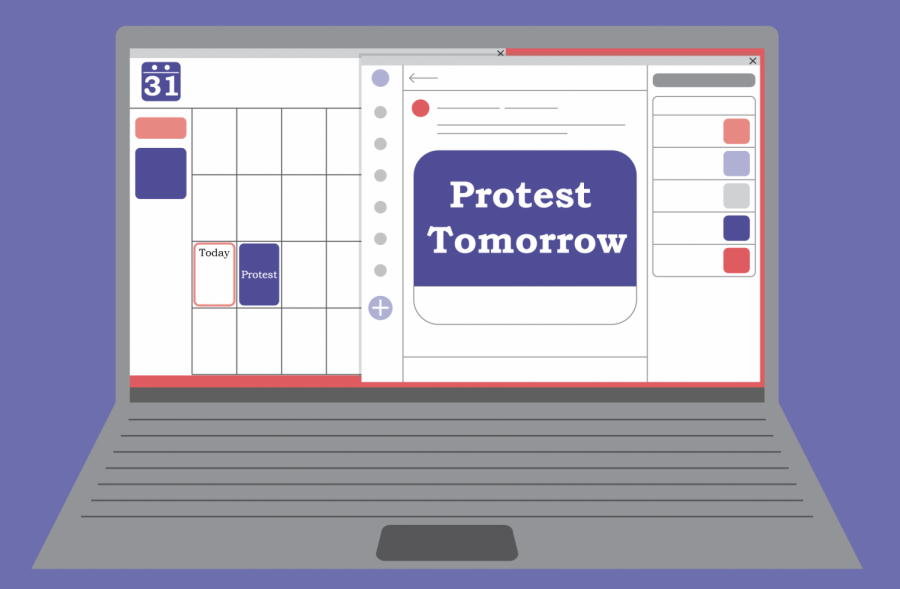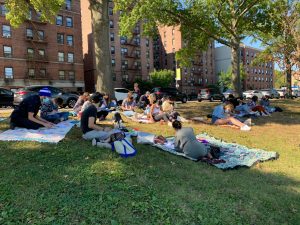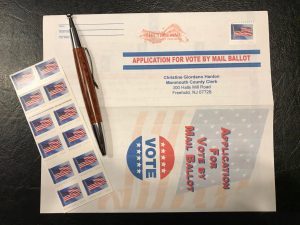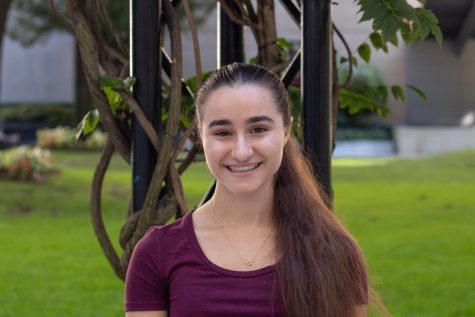Social Media Takes Center Stage for Political Activism
Over 70% of Fordham students participate in political activism through social media
With social media being the No. 1 source of young voters’ political information, activist groups and candidates can use it to reach supporters very easily.
October 27, 2020
The social media platforms known today, such as Facebook, Instagram and Twitter, have only been around to witness three presidential elections. However, for this presidential election, social media has taken the forefront in the public political sphere over the past few years. Particularly among younger adults, the use of social platforms has become the No. 1 source for learning about politics and elections.
The presidential election in 2016 represented new heights of politicians utilizing social media to organize voters and express their viewpoints to a collection of demographics.
Social media provides a direct way for politicians to reach their followers and communicate their political agenda without having to campaign at in-person events. It is also a convenient way for people to participate in politics by keeping up with news and conversing with people within their social media circles.
Online Activism
We often hear of people cutting ties with extended family because of ‘political talk’ on social media, and in some ways this fracture in the family is indicative of a larger split within civic and political discourse. Anirban Baishya, professor of communication and media studies
According to Anirban Baishya, professor of communication and media studies, there are many different forms of online activism. There are grassroots organizations such as Color of Change, which organize campaigns online and provide resources for donating to support causes, and there are also methods for sharing information through one’s social media platform that can be considered online activism as well.
According to The Observer’s 2020 anonymous political survey of 211 students, 77.7% of respondents partake in activism through social media.
Color of Change represents the more traditional way people advocate for issues online, but since the world transitioned to functioning virtually due to the pandemic, the use of social media platforms to champion causes has become much more common.
Prior to the murder of George Floyd by Minneapolis police officers on May 25, Fordham students revealed in the survey that only 55% of respondents actively engaged in online activism. There was a spike in participation after Floyd’s murder, increasing by 22.7%.
Over 60% of respondents said they post political content on their social media platforms at least once a week, and they reported that their frequency of posts have also increased since the death of George Floyd.
However, even though 77.7% of respondents partake in online activism, only 69.7% believe it is effective.
One respondent said that online activism is not effective for creating real change. “The nature of social media algorithms fosters behaviors of virtue signaling, groupthink, toxicity, close-minded mental masturbation, cancel culture and ephemeral activism,” the student said.
These characteristics of social media that the respondent named are not entirely inaccurate. The incorporation of social media with politics has created more divisiveness in society, Baishya said.
“We often hear of people cutting ties with extended family because of ‘political talk’ on social media, and in some ways this fracture in the family is indicative of a larger split within civic and political discourse,” he explained. “I think we are in an era of unprecedented polarization.”
However, Baishya said that he doesn’t think that online activism is a bad thing.
“Social media is pervasive and people can think of it as annoying, but because of this pervasiveness itself, it’s rife with political potential,” he said. Many successful grassroots organizations started on social media and were able to make more connections across geographical separation to organize behind a common cause.
Some survey respondents explained that online activism alone without public action is why online activism may not be as effective. Baishya agreed and described the nature of political mobilization within two separate spheres — and online and offline — that mutually shape each other.
“Trying to understand one without grasping the other is always going to fall short,” he said.
Only 52.6% of Fordham student respondents said they participate in activism that is not online or social media-based. The 25% difference in respondents who participate only online instead of being active in person leads many people to view online activism as inauthentic or performative.
Performativity With Online Activism
I feel pressure, but not because I want my friends or peers to feel more highly about me, but because I feel a sense of obligation to increase awareness and support the under-served.” Helen Hylton, FCLC ’23
“Performativity isn’t necessarily a bad thing,” Baishya said. “Even demonstrations are performative, in the sense that political sloganeering is a form of performance.” However, when in the context of social media, performativity starts to take on a negative connotation.
The majority of respondents — 71.1% — believe that online activism is performative. Additionally, almost 80% don’t think that online activism is an authentic representation of one’s self and role in social justice. Since social media has an overtone of inauthenticity online, performativity on social media can be perceived as inauthentic.
“A lot of people just post black squares or put a nation’s flag over their profile picture and call it a day,” one respondent said. “Social media can of course help coordinate people showing up, but social media alone is not a place for activism.”
Another reason why performative trends on social media can be seen as inauthentic is because the motivation for posting comes from pressure to conform to the trend.
For example, a trend following the murder of George Floyd, #BlackoutTuesday, where Instagram users posted black squares on their timelines as a sign of solidarity, gained momentum through the use of peer pressure. Many activists later criticized this trend for being performative and having no real meaning attached to the posts.
While Baishya agreed that social media trends such as #BlackoutTuesday are not inherently forms of activism, the use of peer pressure and fear of missing out that is present on social media can have a positive impact. Pressure can make people aware of certain issues instead of obliviously going about their lives unaware of the injustice inducing the cause.
“It’s a double-edged sword — it does add to the volume of circulation of important messages, so that’s a plus,” he said. “But without being backed by committed action it can always fall short.”
Of the respondents, 54% said that they feel pressure to engage in online activism. One respondent, Gabby Rivera, FCLC ’21, acknowledged the pressure she felt to post online. She decided to take a break from social media, despite worries that her followers would think she didn’t care about certain issues arising.
“After the murder of George Floyd, I had to take a very very very long break from social media,” she said. “I had friends in group chats saying ‘if people aren’t actively saying #BLM on their accounts I can’t be friends with them.’ However, I feel the people who know me would know that I would agree Black lives matter.”
Another common theme among respondents were the feelings of “annoyance” or “exhaustion” that came from the amount of political expression on social media.
“I feel pressure, but not because I want my friends or peers to feel more highly about me, but because I feel a sense of obligation to increase awareness and support the under-served,” respondent Helen Hylton, FCLC ’23, said.
Spreading Misinformation
While the general political discourse appears extremely polarized today, the people on social media making their voices heard are not necessarily representative of the broader public sphere. Anirban Baishya
Laura Vasquez, FCLC ’22, revealed in her survey response that she does not feel pressured to post political views online, but that she has been active in posting resources for various causes since before the murder of Floyd.
Her feelings toward the effectiveness of online activism are that it can be both helpful and detrimental because of how quickly information spreads.
“Online activism helps spread resources quickly, but it can also result in rapid misinformation, which can harm activists’ efforts,” she said.
Baishya said he was struggling to find the positives of online activism considering the current political climate; one negative he can immediately recognize is the impact of “trolls.”
Internet trolls are fake accounts created in copious amounts that are meant to purposely spread controversial information, regardless of whether they hold factual merit. Trolls aren’t regulated on social media platforms. Therefore, people are left up to their own judgments about what they choose to believe online.
“Filter bubbles” are another concern online, as people follow only close groups of like-minded individuals on social media. Therefore, they only learn about information with which they would agree.
In a New York Times report, a study found that 97% of political tweets are coming from only 10% of Twitter users. So while the general political discourse appears extremely polarized today, the people on social media making their voices heard are not necessarily representative of the broader public sphere, Baishya analyzed.
“However, we must recognize that the early euphoria about the internet and how it would lead to a utopic, democratic state — that is definitely not happening. In some ways, social media and its viral potentials boost political beliefs and actions, but on the other hand they also accentuate divisions.”
Baishya and many of the respondents agreed that social media is a great tool for amplifying voices and adding to the political discussion, but without resources to create and promote action, the movement can remain static.

















